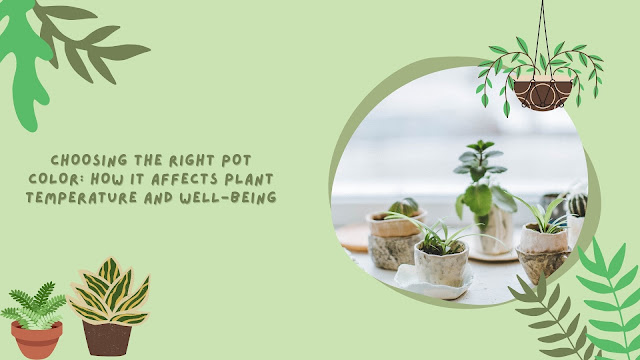The Gardener’s Guide to Edible Flowers: 10 Beautiful and Delicious Choices
.jpg)
Edible flowers are a delightful addition to any garden, offering not only beauty but also a unique touch to your culinary creations. From vibrant colors to intriguing flavors, these flowers can transform both your garden and your plate. In this comprehensive guide, we’ll explore the top 10 edible flowers you can grow, their uses, and tips for cultivation. Whether you're a seasoned gardener or a beginner, you'll find everything you need to create a stunning and flavorful garden.
1. Nasturtium: The Colorful Culinary Star
Nasturtiums are renowned for their vibrant hues and peppery taste. They thrive in sunny spots and poor soil, making them easy to grow. Use their leaves and flowers in salads for a spicy kick or as a colorful garnish. Their edible petals can also be used to make a tangy nasturtium pesto.
Cultivation Tips:
Sow seeds directly in the garden after the last frost.
Prefers well-drained soil with full sun.
Harvest flowers and leaves regularly to encourage more blooms.
2. Calendula: The Bright and Versatile Bloom
Calendulas, or pot marigolds, have a slightly spicy flavor that’s perfect for adding color to dishes. Their petals can be used to garnish salads, soups, or to make herbal teas. Calendula also has skin-soothing properties, making it great for homemade skincare products.
Cultivation Tips:
Start seeds indoors 6-8 weeks before the last frost or sow directly outdoors.
Thrives in full sun and well-drained soil.
Deadhead regularly to prolong blooming.
3. Viola: Sweet and Elegant
Violas, including pansies and violets, offer a sweet, floral taste that enhances both sweet and savory dishes. Their vibrant colors make them perfect for decorating cakes and salads. They’re also a charming addition to edible flower gardens.
Cultivation Tips:
Sow seeds in early spring or late summer.
Prefers cool temperatures and partial shade.
Keep soil consistently moist but not waterlogged.
4. Chamomile: Calming and Charming
Chamomile flowers are famous for their calming properties and sweet apple-like flavor. Ideal for brewing soothing herbal tea, they also add a delicate touch to salads and desserts.
Cultivation Tips:
Start seeds indoors 6-8 weeks before the last frost or sow directly in spring.
Prefers full sun to partial shade and well-drained soil.
Harvest flowers when they are fully open for the best flavor.
5. Lavender: Aromatic and Flavorful
Lavender’s aromatic flowers have a unique flavor that’s perfect for baking, making lavender syrups, or adding a fragrant touch to dishes. Its beautiful purple spikes also enhance garden aesthetics.
Cultivation Tips:
Grow from seeds or transplants in well-drained soil.
Prefers full sun and low humidity.
Prune regularly to maintain shape and encourage new growth.
6. Borage: Cucumber-Like Delight
Borage flowers have a cucumber-like flavor that’s great for adding to salads or as a garnish. Their star-shaped blue blooms are not only edible but also attract beneficial insects to your garden.
Cultivation Tips:
Sow seeds directly in the garden after the last frost.
Prefers full sun and well-drained soil.
Harvest flowers regularly to encourage continued blooming.
7. Bee Balm: Minty and Attractive
Bee balm offers a minty, slightly spicy flavor that enhances teas and salads. Its bright red, pink, or purple blooms attract bees and butterflies, making it a wonderful addition to pollinator-friendly gardens.
Cultivation Tips:
Start seeds indoors 6-8 weeks before the last frost or sow directly in spring.
Prefers full sun to partial shade and well-drained soil.
Trim spent flowers to promote new growth.
8. Heliotrope: Sweet and Fragrant
Heliotrope flowers have a sweet, vanilla-like flavor and are great for desserts or as a colorful garnish. Their pleasant fragrance also adds an extra layer of charm to your garden.
Cultivation Tips:
Start seeds indoors 6-8 weeks before the last frost or purchase young plants.
Prefers full sun and well-drained soil.
Keep soil consistently moist and provide support for tall varieties.
9. Squash Blossoms: Delicate and Delicious
Squash blossoms are delicate and slightly sweet, perfect for stuffing with cheese and frying. They’re also an excellent way to enjoy a bountiful squash crop.
Cultivation Tips:
Grow alongside squash plants, ensuring plenty of space for sprawling.
Harvest flowers in the morning for the best flavor.
Use them fresh or store in the refrigerator for a few days.
10. Roses: Elegant and Sweet
Roses offer a subtle, sweet flavor that can enhance salads, desserts, or homemade rose water. Choose unsprayed varieties to ensure they’re safe for consumption.
Cultivation Tips:
Grow from transplants or established plants.
Prefers full sun and well-drained soil.
Harvest petals early in the morning and avoid flowers treated with pesticides.
Conclusion
Incorporating edible flowers into your garden not only adds beauty but also enriches your culinary experiences. By growing these top 10 edible blooms, you can enjoy a garden that’s as flavorful as it is vibrant. Follow the cultivation tips provided to ensure a successful and bountiful harvest, and let your garden become a source of both visual delight and gourmet inspiration.
Reference link - https://medium.com/@seobagiyaa/the-ultimate-guide-to-growing-edible-flowers-top-10-blooms-for-your-garden-97100d1a50fd



Comments
Post a Comment